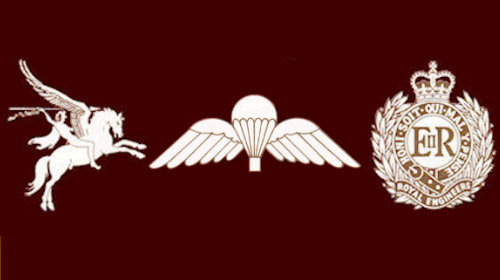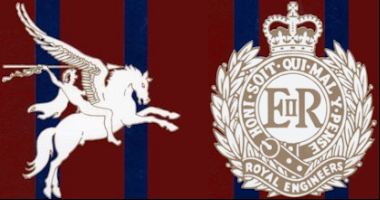
Roll of Honour
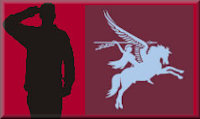
Colonel Freddie Kemp OBE - Born 18th January 1954, Died 18th September 2020
 |
Determined, fiercely protective and mischievous, there was never any doubt that Freddie was going to join the Army given a long family association with the Corps of Royal Engineers. Both his grandfather and great grandfather were Sappers, and his father had served with the 9th Parachute Battalion during and after World War 2 and later with the Royal Engineers. As a result, Freddie specifically wanted to be a Parachute Engineer and nothing else would suffice. He was educated at Brighton Hove and Sussex Grammar School, Welbeck College and RMA Sandhurst before being commissioned in 1973. |
Early in his career he served three times in Northern Ireland, twice with 9 Parachute Squadron in South Armagh in the sapper role and once with 2 Armoured Engineer Squadron in Londonderry, deployed as infantry. During his second tour with 9 Squadron he was fortunate to cheat death during a route reconnaissance in a covert car south of Bessbrook when a Granada car overtook him and was blown up by a huge culvert bomb almost immediately afterwards. During the follow up operation, it was discovered that the bomb was detonated by a command wire traced to a firing post with a well-planned escape route for the terrorists. However, the section of the route immediately before the culvert was invisible to the firing point. The bombers, who had been tipped off by a Provisional IRA lookout that the 'next car' was the target, therefore mistakenly detonated the bomb under the Granada that had just overtaken Freddie in the 'target car'.
In 1982, 9 Squadron deployed to the Falkland Islands as part of the UK Force to regain the islands after the Argentinian invasion. As the 2IC, Freddie played a key role in ensuring that the Squadron was thoroughly prepared for what lay ahead and an impromptu speech he gave on the eve of the Squadron landing ashore is still remembered by many with him at the time. In the immediate aftermath of the devastating Argentinian air attack at Bluff Cove on Sir Tristram and Sir Gallahad, he quickly set up the helicopter casualty evacuation sites at Fitzroy, helping to evacuate more than 200 wounded and badly burned soldiers, amongst whom were a number attached to the Squadron.
His next posting was to the Royal Brunei Malay Regiment. His role was to establish, recruit and train a Combat Engineer Squadron and he was awarded the Brunei Independence Medal by the Sultan for his efforts leading up to and during the Independence celebrations in 1984.
Keen to instill a love for travel and broadening horizons in his young family, wife Kate with son Freddie and daughter Hannah, Freddie organised an extended trip back to the UK at the end of the posting. Despite the constraints of a shoestring budget, they were able to visit Australia, New Zealand, French Polynesia and the United States before Freddie had to report to Staff College.
He subsequently commanded 34 Field Squadron, supporting 19 Airportable Brigade. As the first Gulf War loomed, he was warned to stand by for a reconnaissance to the Middle East and asked his Sergeant Major to borrow a camel from a circus for the next Squadron Parade.
After the Sergeant Major had called the Parade to attention the camel walked from left to right behind Freddie, clearly visible to the whole Squadron. Nothing was said but a heavy hint had been dropped regarding the next point of effort!
Freddie left the regular Army in 1991 to set up his own company. Meanwhile he had joined 10 PARA as a reservist and served in a variety of appointments that included company commander, Training Major of Cambridge University OTC and Commander 2 (South East) Brigade Specialist Team. He sold the company in 1995 after being recruited to work for an operator in the airport car parking business, where an aspect of his role was to find land and obtain planning permission. It was through this that he met his second wife, Jane.
Freddie was mobilized to join 16 Air Assault Brigade as Liaison Officer to the Special Forces in Afghanistan in 2001/02 and to 3 Commando Brigade during the second Gulf War in 2003.
On leaving the airport parking business, together with their beloved spaniel Zara, he and Jane bought their home in France, a place that holds very happy memories for his family as well as being the place that cemented Freddie’s keen fondness for Bordeaux claret. It was here that he perfected his homemade fig jam and persuaded all visitors to regularly partake in ‘coffee and cognac’.
Perhaps the most challenging but rewarding time for Freddie during his long military service with both regular and reserve forces was his appointment at the Defence Inquest Unit to assist coroners coping with over 300 military inquests going back to 2002. There he took charge of all Special Force inquests at the behest of Director Special Forces for 4 years from 2009 and was awarded the OBE in 2013 for his contribution. He approached each inquest with enormous compassion and respect for the personnel and the families involved.
In 2013, Freddie was also promoted to Colonel and became Team Leader for implementing the Defence Youth Engagement Review, introducing a Cadet Forces Commission that recognises Cadet Force officers as Youth Workers rather than Reservists. He finally left the Army in 2018 having served longer with the Parachute Regiment than the Royal Engineers.
Freddie had an intimate connection with Arnhem: His first wife’s father, Lieutenant Rod Pearson, had been deployed during Operation Market Garden in September 1944 with the 1st Airlanding Light Regiment RA and developed a lifelong friendship with Kate ter Horst and her family, who had nursed many of the wounded during the battle within her house in the old Rectory at Oosterbeek. Such was the importance of that friendship that he named his daughter Kate after this remarkable woman. Freddie and his family all maintained this strong relationship with her family and Freddie has subsequently parachuted into Arnhem on multiple occasions as well as leading many battlefield tours there.
He is survived by his second wife Jane, his two children from his marriage to Kate, Freddie and Hannah, and two grandsons.
The following is from the December 2020 edition of the AEA Journal
In Memory of Col ‘Freddie’ Kemp OBE
 |
Colonel Freddie Kemp OBE Born 18 January 1954, died 18 September 2020, aged 66. Determined, fiercely protective and mischievous, there was never any doubt that Freddie was going to join the Army given a long family association with the Corps of Royal Engineers. Both his grandfather and great grandfather were Sappers, and his father had served with the 9th Parachute Battalion during and after World War 2 and later with the Royal Engineers. As a result, Freddie specifically wanted to be a Parachute Engineer and nothing else would suffice. He was educated at Brighton Hove and Sussex Grammar School, Welbeck College and RMA Sandhurst before being commissioned in 1973. |
Early in his career he served three times in Northern Ireland, twice with 9 Parachute Squadron in South Armagh in the sapper role and once with 2 Armoured Engineer Squadron in Londonderry, deployed as infantry. During his second tour with 9 Squadron he was fortunate to cheat death during a route reconnaissance in a covert car south of Bessbrook when a Granada car overtook him and was blown up by a huge culvert bomb almost immediately afterwards. During the follow up operation, it was discovered that the bomb was detonated by a command wire traced to a firing post with a well-planned escape route for the terrorists. However, the section of the route immediately before the culvert was invisible to the firing point. The bombers, who had been tipped off by a Provisional IRA lookout that the 'next car' was the target, therefore mistakenly detonated the bomb under the Granada that had just overtaken Freddie in the 'target car'. |
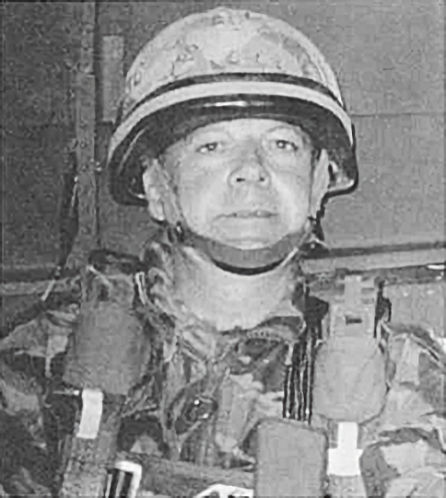 |
In 1982, 9 Squadron deployed to the Falkland Islands as part of the UK Force to regain the islands after the Argentinian invasion. As the 2IC, Freddie played a key role in ensuring that the Squadron was thoroughly prepared for what lay ahead and an impromptu speech he gave on the eve of the Squadron landing ashore is still remembered by many with him at the time. In the immediate aftermath of the devastating Argentinian air attack at Bluff Cove on Sir Tristram and Sir Gallahad, he quickly set up the helicopter casualty evacuation sites at Fitzroy, helping to evacuate more than 200 wounded and badly burned soldiers, amongst whom were a number attached to the Squadron.
His next posting was to the Royal Brunei Malay Regiment. His role was to establish, recruit and train a Combat Engineer Squadron and he was awarded the Brunei Independence Medal by the Sultan for his efforts leading up to and during the Independence celebrations in 1984. Keen to instil a love for travel and broadening horizons in his young family, wife Kate with son Freddie and daughter Hannah, Freddie organised an extended trip back to the UK at the end of the posting. Despite the constraints of a shoestring budget, they were able to visit Australia, New Zealand, French Polynesia and the United States before Freddie had to report to Staff College.
He subsequently commanded 34 Field Squadron, supporting 19 Airportable Brigade. As the first Gulf War loomed, he was warned to stand by for a reconnaissance to the Middle East and asked his Sergeant Major to borrow a camel from a circus for the next Squadron Parade. After the Sergeant Major had called the Parade to attention the camel walked from left to right behind Freddie, clearly visible to the whole Squadron. Nothing was said but a heavy hint had been dropped regarding the next point of effort!
Freddie left the regular Army in 1991 to set up his own company. Meanwhile he had joined 10 PARA as a reservist and served in a variety of appointments that included company commander, Training Major of Cambridge University OTC and Commander 2 (South East) Brigade Specialist Team. He sold the company in 1995 after being recruited to work for an operator in the airport car parking business, where an aspect of his role was to find land and obtain planning permission. It was through this that he met his second wife, Jane.
Freddie was mobilized to join 16 Air Assault Brigade as Liaison Officer to the Special Forces in Afghanistan in 2001/02 and to 3 Commando Brigade during the second Gulf War in 2003. On leaving the airport parking business, together with their beloved spaniel Zara, he and Jane bought their home in France, a place that holds very happy memories for his family as well as being the place that cemented Freddie’s keen fondness for Bordeaux claret. It was here that he perfected his homemade fig jam and persuaded all visitors to regularly partake in ‘coffee and cognac’.
Perhaps the most challenging but rewarding time for Freddie during his long military service with both regular and reserve forces was his appointment at the Defence Inquest Unit to assist coroners coping with over 300 military inquests going back to 2002. There he took charge of all Special Force inquests at the behest of Director Special Forces for 4 years from 2009 and was awarded the OBE in 2013 for his contribution. He approached each inquest with enormous compassion and respect for the personnel and the families involved. In 2013, Freddie was also promoted to Colonel and became Team Leader for implementing the Defence Youth Engagement Review, introducing a Cadet Forces Commission that recognises Cadet Force officers as Youth Workers rather than Reservists. He finally left the Army in 2018 having served longer with the Parachute Regiment than the Royal Engineers.
Freddie had an intimate connection with Arnhem: His first wife’s father, Lieutenant Rod Pearson, had been deployed during Operation Market Garden in September 1944 with the 1st Airlanding Light Regiment RA and developed a lifelong friendship with Kate ter Horst and her family, who had nursed many of the wounded during the battle within her house in the old Rectory at Oosterbeek. Such was the importance of that friendship that he named his daughter Kate after this remarkable woman. Freddie and his family all maintained this strong relationship with her family and Freddie has subsequently parachuted into Arnhem on multiple occasions as well as leading many battlefield tours there.
He is survived by his second wife Jane, his two children from his marriage to Kate, Freddie and Hannah, and two grandsons.
Freddie will have been well known to many of us. Commissioned into the Corps in 1973, he passed P Coy the following year. His long service with 9 Sqn included Op CORPORATE in 1982. He transferred to the Parachute Regiment in 1991, serving with 10 Para (V) and HQ 16 Bde. Freddie saw active service in Northern Ireland, The Falklands, Iraq and Afghanistan.
A few of the many who came to bid Freddie a final farewell
 |
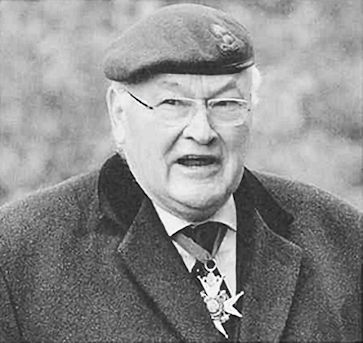 |
 |
 |
 |
|
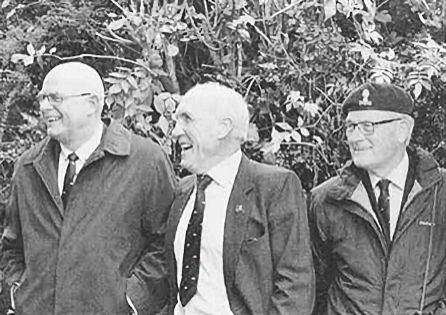 |
 |
 |
|
With a final fitting tribute from the RAF |
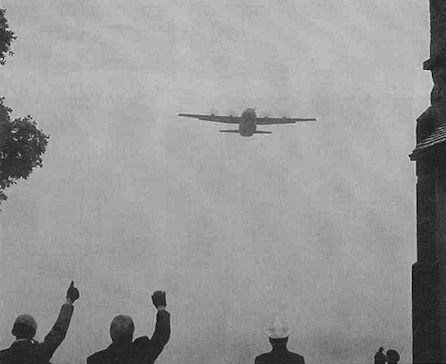 |

